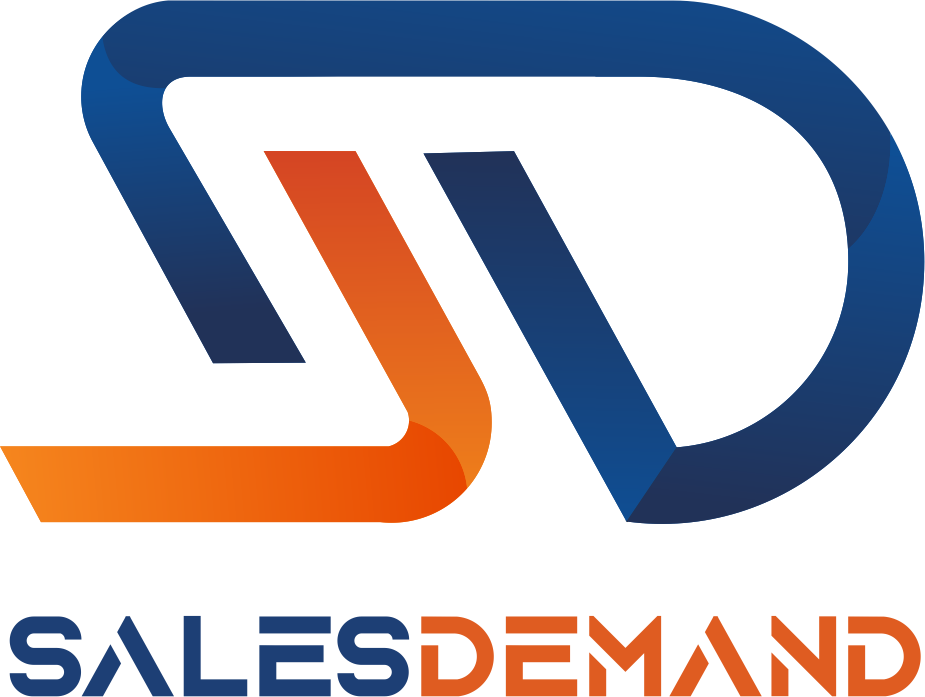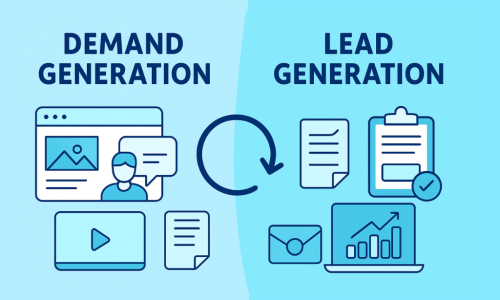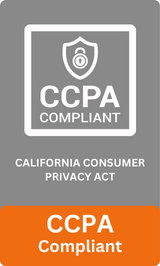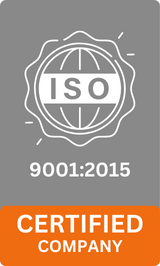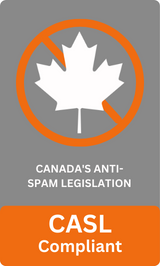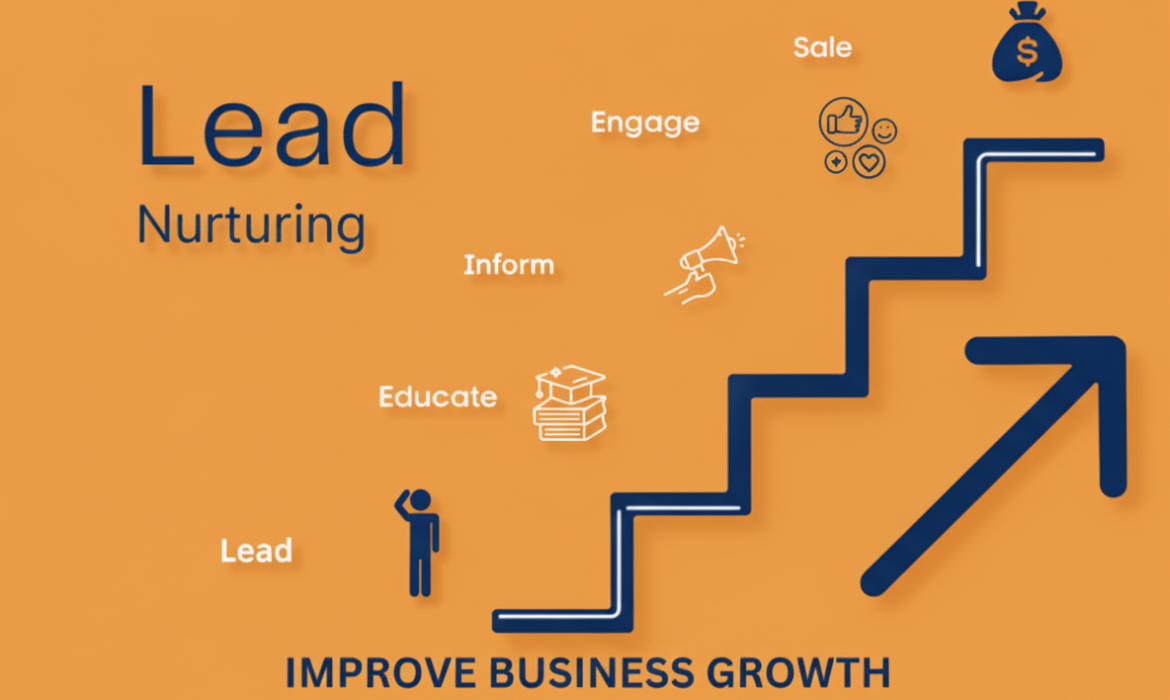
“People don’t buy what you do; they buy why you do it.”
— Simon Sinek
Did you know that nurtured leads result in 50% more sales-ready prospects at 33% lower cost, and they make 47% larger purchases compared to non-nurtured leads?
If you’re still treating lead nurturing as an optional marketing tactic, you’re likely leaving opportunities and revenue on the table. The path from capturing attention to closing deals isn’t a sprint; it’s a carefully guided journey. This is where strategic lead nurturing transforms passive interest into committed customers.
Let’s explore how modern lead nurturing, powered by multi-channel tactics, data-backed personalization, and automation, can fuel sustainable business growth.
Table of Contents
ToggleWhat Is Lead Nurturing?
Lead nurturing is the systematic process of engaging prospective customers with relevant, timely content and interactions until they are ready to buy. It uses targeted messaging, multi-channel touchpoints, and behavior- or time-based automation to progress leads from awareness → consideration → decision.
In practice, nurturing intersects three disciplines:
- Content marketing (providing useful information at each stage),
- Marketing automation (delivering the right content at the right time),
- Sales enablement (ensuring qualified leads move smoothly to sales).
Why Lead Nurturing Drives Business Growth
Lead nurturing improves growth in three measurable ways:
- Higher conversion rates: nurtured prospects are more qualified and convert at higher rates.
- Lower acquisition costs: By improving conversion efficiency, you reduce the cost to acquire a customer.
- Larger deal sizes and retention: nurtured relationships build trust and open opportunities for upsell and cross-sell.
Clear, consistent nurture programs shorten sales cycles and improve forecast accuracy. If you want predictable pipeline growth, nurturing is the foundation.
Core Principles of Successful Lead Nurturing
Before building workflows, embed these principles into your program:
- Relevance: Always match content to the lead’s pain, role, and stage.
- Cadence (not frequency): Maintain consistent contact without spamming quality over quantity.
- Personalization: Use role or firmographic data to tailor messaging.
- Measurement: Decide KPIs up front and instrument them.
- Alignment: Coordinate marketing and sales on definitions, handoffs, and SLAs.
Keep these principles visible – they guide decisions when you create content, set automation logic, or prioritize accounts.
How to Build an Effective Lead Nurturing Program
Step 1 – Define your ICP and buyer stages
Action items:
- Document your Ideal Customer Profile (ICP): industry, company size, revenue band, geography, and typical job titles involved in purchase decisions.
- Map buyer stages: Awareness, Consideration, Decision, and Post-Purchase (onboarding/expansion).
Why it matters: Without ICP and stage clarity, messaging will be generic and ineffective.
Step 2 – Audit and map existing content to the journey
Action items:
- Inventory your content (blog posts, ebooks, case studies, webinars, videos).
- Create a content map: assign each asset to a buyer stage and persona.
Outcome: You’ll quickly see content gaps (e.g., no decision-stage ROI pieces) and know what to create first.
Step 3 – Segment your leads for targeted outreach
Common segmentation criteria:
- Role (e.g., CTO vs. Head of Ops)
- Company size
- Industry
- Behavior (pages visited, downloads, webinar attendance)
- Lead source (organic, paid, event)
Example: A lead from a healthcare domain who downloaded a compliance whitepaper needs different nurture content than a retail IT lead who watched a product demo.
Step 4 – Build lead scoring that drives handoffs
A simple scoring model:
- +10 points: Attended a webinar
- +8 points: Opened 5+ emails in 30 days
- +15 points: Requested pricing/demo
- -5 points: Unsubscribed from newsletter
Define a threshold (e.g., 70 points) where marketing auto-notifies sales to initiate human outreach. Review and refine scores monthly based on conversion data.
Step 5 – Design nurture streams and automation workflows
Create 3–5 core nurture streams by persona & stage. Each stream contains 6–10 touchpoints (email + supporting channel). Example: Awareness stream (6 weeks):
- Day 0 — Welcome email + overview
- Day 3 — Thought leadership article (pain context)
- Day 10 — Short case study (relevance proof)
- Day 18 — Educational webinar invite
- Day 25 — ROI calculator offer (interactive)
- Day 35 — Demo invitation/sales outreach
Include behavioral triggers: if a lead clicks the ROI calculator, escalate to a “high intent” stream with an immediate sales alert.
Step 6 – Create content tailored to each touchpoint
Content types to consider:
- Awareness: Industry reports, problem-centric blog posts, short videos.
- Consideration: Case studies, whitepapers, product comparisons, webinars.
- Decision: ROI calculators, tailored demos, testimonial bundles, free trials.
Tip: For decision-stage content, use account-specific case studies and metrics they reduce friction.
Step 7 – Use multi-channel engagement
Don’t rely solely on email. Combine:
- Email (primary nurture channel)
- Retargeting ads (brand recall)
- LinkedIn outreach or sponsored content (B2B targeting)
- Web personalization (dynamic landing pages)
- Events/webinars (deep engagement)
Synchronized messages across channels feel cohesive and increase trust.
Step 8 – Personalization at scale (practical tactics)
Use dynamic fields and conditional content in emails and landing pages. Examples:
- Subject line: “How [Company] can reduce onboarding time by 30%”
- Email open line: “Hi [First name], I noticed you downloaded our security checklist – here’s a quick case study… ”
Advanced: use intent data and site behavior to swap hero content on landing pages (if the user viewed pricing, show condensed ROI).
Step 9 – Test, measure, and iterate
A/B tests to run:
- Subject lines (personalized vs. generic)
- Email length (short vs. long)
- CTA types (demo vs. ROI calculator)
- Send times and cadences
Key metrics:
- Open and click-through rates (engagement)
- MQL → SQL conversion rate (handoff quality)
- Lead → Opportunity conversion (pipeline impact)
- Time to conversion (sales cycle length)
- Customer Acquisition Cost (CAC) and Lifetime Value (LTV) improvements
Use these insights to refine messaging, timing, and scoring.
Practical Examples & Ready-to-Use Templates
Sample 1 – Welcome Email (short, day 0)
Subject: Welcome, [First name] – resources you’ll find useful
Body:
Hi [First name],
Thanks for downloading “[Asset title].” I thought you might also find this short case study useful: [link]. If you’d like, I can schedule a 15-minute chat to understand your priorities.
Best,
[Sender name], [Title]
Sample 2 – Mid-Stage Case Study Email (day 10)
Subject: How [Peer Company] cut costs by 20% – short read
Body:
Hi [First name],
When [Peer Company] faced [pain point], they implemented [solution]. Within 6 months, they reduced [metric] by 20%. I’ve attached the two-page case study, which highlights the approach, timeline, and results. Would you like a personalized breakdown for [Company]?
Regards,
[Sender]
Sample 3 – Re-engagement Email (30+ days no activity)
Subject: Still relevant: [Topic] – worth a quick look?
Body:
Hi [First name],
We haven’t heard back on whether priorities have shifted. I understand. If you’re still exploring [topic], here’s a quick checklist that helps you assess readiness: [link]. If not, would you like to pause these emails?
Thanks,
[Sender]
Common Mistakes (and How to Fix Them)
- Over-emailing leads
Fix: Set cadence caps and use engagement decay logic (slow down after 3 unopened emails). - Generic content for all stages
Fix: Audit and map content to journey stages; produce 2–3 decision-stage assets immediately. - No defined handoff to sales
Fix: Publish a Service Level Agreement (SLA) between marketing and sales: lead qualification rules, response times, and feedback loop. - Ignoring mobile experience
Fix: Design all emails and landing pages mobile-first and run tests on devices.
Tools & Tech Stack (practical shortlist)
- Marketing Automation / ESP: HubSpot, Marketo, Pardot, ActiveCampaign
- Account/Intent Data: 6sense, Bombora, ZoomInfo, Clearbit
- Web Personalization: Optimizely, VWO, Unbounce (for dynamic landing pages)
- Ad Retargeting: LinkedIn Matched Audiences, Google Display
- Analytics / BI: Google Analytics, Looker, HubSpot Reports
Choose tools that integrate with your CRM to keep data unified.
Example 8-Week Nurture Campaign (timeline)
Week 1: Welcome email + blog digest
Week 2: Problem-focused article + soft CTA
Week 3: Case study (similar company) + mid-stage survey
Week 4: Webinar invite (value-based)
Week 5: Webinar follow-up + ROI calculator
Week 6: Personalized video or one-pager for decision-makers
Week 7: Pricing explainer/demo CTA
Week 8: Direct sales outreach for leads above score threshold
This cadence mixes content, events, interactive tools, and sales touches to move prospects forward efficiently.
Measurement Framework – What to Track Weekly vs Monthly
Weekly:
- New leads entered to nurture streams
- Email open and CTR per stream
- Number of leads crossing scoring thresholds
Monthly:
- MQL → SQL conversion rate
- Average time in funnel
- CAC by channel (after nurture)
- Revenue influenced by nurture
Quarterly:
- LTV by cohort
- Program ROI (revenue influenced ÷ program cost)
Final Checklist Before Launching Your First Program
- ICP and buyer stages documented
- Content mapped and gaps identified
- 2–3 decision-stage assets created
- Lead scoring rules and thresholds set
- Automation workflows built and tested
- Sales SLA is published and agreed
- Multi-channel plan (email + LinkedIn + retargeting) ready
- Analytics dashboards set up for weekly monitoring
Conclusion
Lead nurturing is not a side activity; it is the engine that converts interest into measurable revenue. When you combine disciplined segmentation, targeted content mapped to the buyer’s journey, automation, and close sales-marketing alignment, you create a repeatable system that reduces CAC, shortens sales cycles, and increases average deal value.
I hope you find the above content helpful. For more such informative content, please visit SalesDemand.
